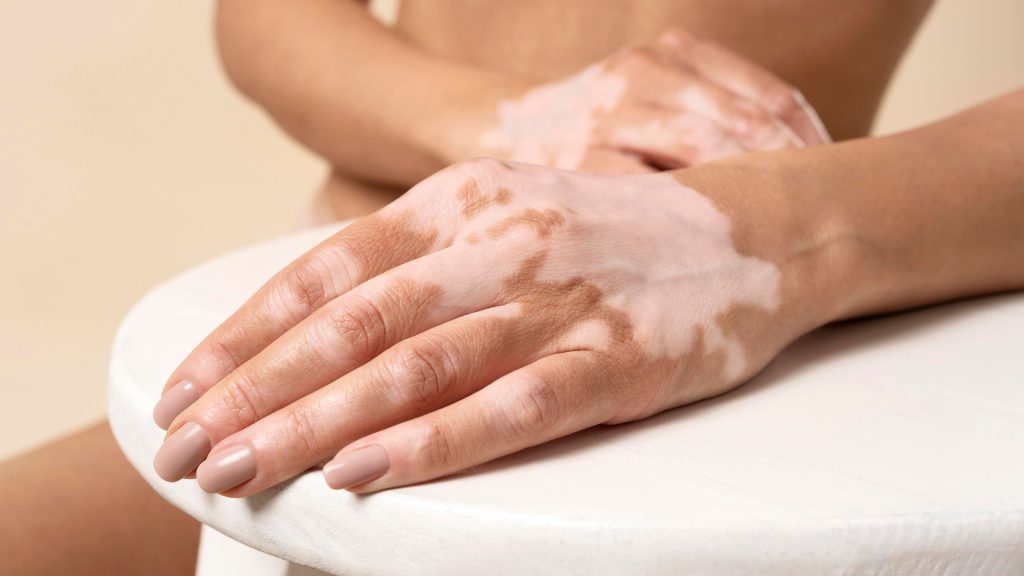Back to General Dermatology

What is Vitiligo?
Vitiligo is an autoimmune skin disorder that causes the loss of pigmentation, resulting in white patches on the skin. It occurs when melanocytes, the cells responsible for producing melanin (the pigment that gives color to the skin, hair, and eyes), are destroyed or become non-functional. The exact cause of vitiligo is still unknown, but it is believed to involve a combination of genetic, autoimmune, and environmental factors.
Symptoms of Vitiligo
- Depigmented Patches: The primary symptom of vitiligo is the appearance of white or depigmented patches on the skin. These patches are usually well-defined and their size and location can vary from person to person. Common areas affected by vitiligo include the face, hands, feet, elbows, knees, and genital area.
- Symmetrical Distribution: Vitiligo often occurs symmetrically, meaning it affects both sides of the body in a similar pattern.
- Hair and Eyebrow Color Changes: In addition to skin depigmentation, vitiligo can also cause a loss of color in the hair, eyebrows, eyelashes.
Causes and Triggers
- Autoimmune Factors: Research suggests that vitiligo is an autoimmune phenomenon, where the body’s immune system mistakenly attacks and destroys melanocytes.
- Genetic Predisposition: Family history of vitiligo or other autoimmune conditions can increase the likelihood of developing the disorder.
- Environmental Triggers: Certain environmental factors, such as exposure to certain chemicals, sunburn, or emotional stress, may trigger or worsen vitiligo in susceptible individuals.
Treatment Options for Vitiligo
- Topical Corticosteroids: These anti-inflammatory creams or ointments can help restore some pigmentation to the affected areas and slow down the progression of vitiligo.
- Topical Calcineurin Inhibitors: Tacrolimus or pimecrolimus can be used to reduce inflammation and encourage repigmentation. Topical calcineurin inhibitors can be used to avoid the side effects from long term use of topical steroids.
- Phototherapy: Light-based treatments such as an excimer laser can stimulate repigmentation in the affected areas.
- Topical and systemic JAK inhibitors: The most recent FDA approved tools in the treatments of vitiligo, topical and systemic JAK inhibitors can suppress the autoimmune attack of the melanocytes.
- Depigmentation: In cases where vitiligo affects a large portion of the body, depigmentation may be an option to even out the skin color by lightening the remaining pigmented skin.
- Camouflage Techniques: Cosmetics, such as specially formulated cover-up creams or makeup, can help conceal the depigmented patches and improve the appearance of vitiligo.
Vitiligo is a complex skin disorder that requires a multidimensional approach for management. While there is currently no cure for vitiligo, various treatment options and supportive measures are available to help individuals manage their symptoms and improve their quality of life. If you or a loved one is living with vitiligo, please call to schedule a consultation with one of our highly skilled board-certified medical providers to determine the most appropriate treatment plan tailored to your specific needs.
